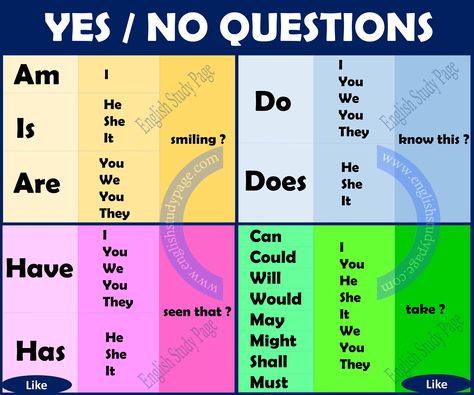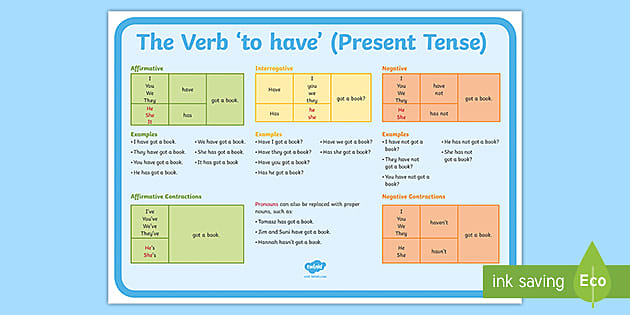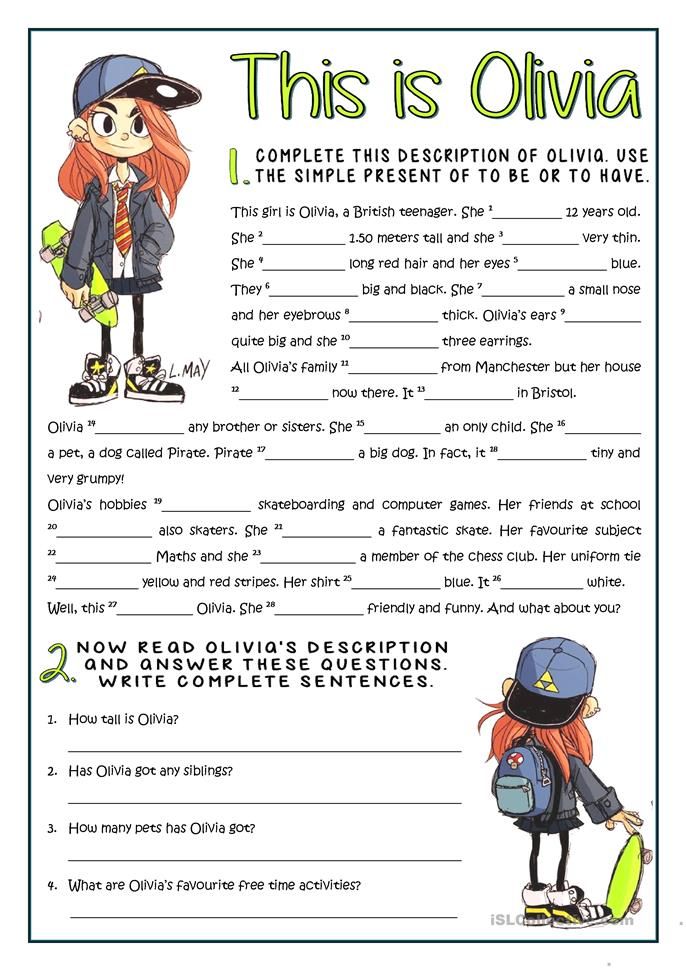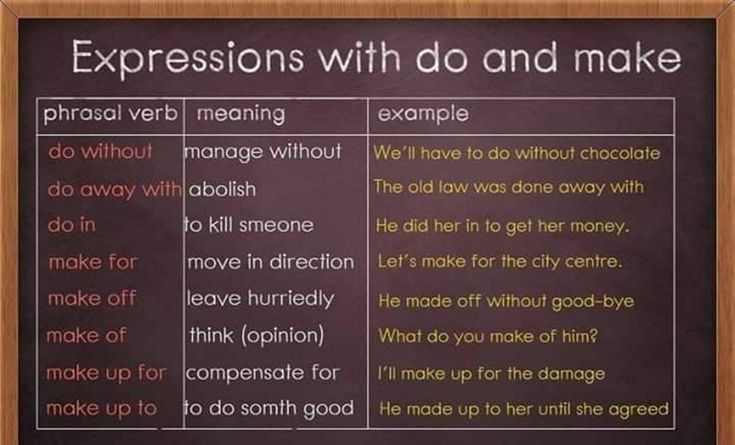If you ever have purchased an ATV, you may have noticed that there are many restrictions on purchasing and owning it. Purchasing an ATV will have similar restrictions as owning the ATV, but owning an ATV is much more strict. One of the biggest of these restrictions in modern times is having to have a title with your ATV- but this was not always the case.
When did ATVs start having titles? The earliest records of ATVs having titles is in the mid-1980s. Shortly after 1985, there was a demand for titles on ATVs so they could have proper insurance, registration, and ownership similar to cars and motorcycles. Every state still has its own rules on the need for a title for ATVs.
If you are only purchasing new ATVs (or those made in the last 20 years), then you will likely never have to worry about not having a title. Of course, there are times that this question will still arise (and possibly already has if you are reading this). Continue reading to learn the basics of titles and ATVs including if all ATVs have titles, how to get one, and what to do if the ATV you buy does not have a title.
While it was uncommon up until about the 1990s for ATVs to come standard with titles, the recent times and regulations around them have not always kept it this way. Having a title on your ATV can help to provide proof of ownership, registration, and insurance and is viewed in the same manner as other vehicles that require a license to be driven.
Do all ATVs come with titles? In general, almost all new ATVs (since at least 1997) come with titles today. This is due to increased demand for titles in order to get your ATV registered and insured. If you are purchasing a used ATV, there is a chance that it will not have a title – this could be due to the age of the vehicle, or the previous owner may have lost it.
While it is true that most ATVs will come with a title, it is not always necessary for you.

Many states do not require titling your all-terrain vehicle, even if they require it to have basic liability insurance. You can check online with your DMV (or transportation division) for rules in your state. This would be a great first step, especially if you are looking at used ATVs that may not come with a title.
It would be unfortunate to need a title and not have one in the instance of damage to your ATV, or if you need to report that it was stolen. In these instances, among many others, it can be beneficial to have a title. In the United States, it is important to review your state’s legislation and requirements for carrying (or at least having a copy of) your ATV’s title.
Purchasing an ATV is a big expense. You want to make sure you have everything you need in order to make it a smooth and beneficial transition for you and the owner. One of the most important things to know before buying your next ATV is whether or not the vehicle has a title. If you already bought and realized later that there is no title, try not to worry.
If you already bought and realized later that there is no title, try not to worry.
How do I get a title for an old ATV? If your ATV is older than the title it could have, you will likely just need a bill of sale for lawful purposes. If the ATV should have a title but does not, the best thing to do is to make sure it is not lost or stolen. If the VIN is clean, you can try to trace back owners to find the original title.
Before purchasing a vehicle without a title, it is important to understand why the title is missing.
Unfortunately, the most common reason for this is because it was stolen. Often, stolen ATVs are listed without photos, and are marketed as “used” or “previously owned” but the seller does not specifically reference that they were the one that used or previously owned it.
In this way, the owner (and police) cannot find a photo of the ATV. Of course, this is not always the case, but it happens frequently enough to be known as a yellow flag among ATV purchasers. So, before you purchase a “used” or “previously owned” ATV, it’s important to do your research on what you are actually purchasing.
So, before you purchase a “used” or “previously owned” ATV, it’s important to do your research on what you are actually purchasing.
To avoid being accused of theft, be sure to get a VIN on the ATV that you hope to buy- especially if it does not have a verifiable title and was listed without photos on whatever website you might have found it on. This can give you a warning so you know ahead of time that you are not purchasing a stolen ATV.
It might seem like overkill to take these precautionary steps when it comes to purchasing an ATV without a title, but doing so eliminates any stress or worry that you could be accused of stealing the ATV that you clearly bought. Instead, take the steps to find the title, and if it cannot be found, be sure to file for a title (with a bill of sale) upon making your purchase.
When searching for a used ATV, you may find that often only ATVs without titles are for sale. This happens for a number of possible reasons, and you will find that often it is just fine to purchase this type of ATV. However, you should do your research beforehand and ensure proper precautions to avoid being falsely accused of theft.
However, you should do your research beforehand and ensure proper precautions to avoid being falsely accused of theft.
Is it okay to buy an ATV without a title? You can usually purchase an ATV without a title, as long as you understand the implications. Your state may not require titles, or the ATV may be old enough to simply use a bill of sale. If you need a title for your ATV in your state, make sure you can get one before committing to an ATV that does not have one.
Make sure you get a bill of sale in any case where there is no title. Check out my ATV Bill Of Sale article for more info and free print out of a bill of sale you can use.
While it is okay, in most circumstances, to buy an ATV without a title, it is important to know why there was no title before going through with your purchase. The most common reasons are:
 If you find that this is what happened, be sure to obtain a bill of sale for your purchase and then file for a new title on the ATV. Keep this in a secure location so that you do not lose it like its previous owner.
If you find that this is what happened, be sure to obtain a bill of sale for your purchase and then file for a new title on the ATV. Keep this in a secure location so that you do not lose it like its previous owner. Not only could you lose your ATV, but you could face legal charges for the theft of the ATV (even if you did not originally steal it). Be sure to check the VIN before purchasing and verify that it was not a stolen vehicle. Then, obtain a bill of sale and title on a different ATV option.
Not only could you lose your ATV, but you could face legal charges for the theft of the ATV (even if you did not originally steal it). Be sure to check the VIN before purchasing and verify that it was not a stolen vehicle. Then, obtain a bill of sale and title on a different ATV option.The first three of these reasons that you might find an ATV without a title are fine to purchase, as long as you have a plan to get a title. The last one is, of course, not okay, not advisable, and can cause you to face legal charges and loss of your vehicle. If you encounter a stolen ATV, then it would be best to just call the authorities and continue on your search.
Sharing is caring!
An all-terrain vehicle (ATV) is any self-propelled vehicle with two or more wheels that is manufactured for sale to be used primarily off-highway or in off-road competitions, and that is no wider than 70 inches and weighs no more than 1,000 pounds. This does not include vehicles manufactured for off-highway use and designed exclusively for travel on snow or ice, and supported by one or more skis, belts or cleats that utilize an endless belt tread. Those vehicles, which include snowmobiles, are subject to other laws and regulations.
This does not include vehicles manufactured for off-highway use and designed exclusively for travel on snow or ice, and supported by one or more skis, belts or cleats that utilize an endless belt tread. Those vehicles, which include snowmobiles, are subject to other laws and regulations.
An ATV must be registered with the Department of Motor Vehicles (DMV) if it is operated anywhere in New York State, including on the owner's property.
When you register a new or used ATV for the first time, your registration will expire each year on August 31. Registrations for ATVs originally registered before April 1, 2005, will continue to expire each year on April 30.
ATV dealers are required by law to register every ATV they sell to New York State residents or to non-residents before the purchaser takes delivery; unless the purchaser qualifies for an exemption from registration. A purchaser is exempt from registration when the ATV will be used exclusively: outside of New York State; at special events; for agricultural purposes; or for snow plowing other than for-hire. Dealers must have the purchaser complete and sign a "Declaration of Exemption From Snowmobile or All-Terrain Vehicle Registration" (RV-6).
Dealers must have the purchaser complete and sign a "Declaration of Exemption From Snowmobile or All-Terrain Vehicle Registration" (RV-6).
Unless you qualify for an exemption from registration, you cannot take delivery from an authorized dealer until after the ATV is registered.
If you buy an ATV from a person who is not a New York State registered ATV dealer, you must register the ATV with the DMV. To register the ATV; you must complete an "Vehicle Registration/Title Application" (MV-82) and submit it to a motor vehicle issuing office. To register an ATV; you must provide proofs of ownership, sales tax payment or exemption, your identity, and your date of birth.
Acceptable proof of ownership are:

If you buy your ATV from a registered New York State dealer, you should receive a bill of sale in addition to the acceptable documents that prove ownership. The bill of sale must contain the dealer's name, address and dealer registration number, plus your name and address, the ATV vehicle identification number, the year, make, model, and number of wheels. The bill of sale also must indicate that the ATV is either new or used, and must confirm that the dealer has collected the appropriate sales tax.
If you buy the ATV from a person who is not a registered dealer, you must pay the sales tax at a motor vehicle office. To determine the proper amount of sales tax, the DMV needs proof of what you paid for the ATV. Have the seller sign and give you a Statement of Transaction- Sale or Gift of Motor Vehicle, Trailer, All-Terrain Vehicle (ATV), Vessel (Boat), or Snowmobile (pdf) (at NY State Department of Tax and Finance) (DTF-802). You must submit this form to the motor vehicle office, and pay the appropriate sales tax, before registering your ATV:
You must submit this form to the motor vehicle office, and pay the appropriate sales tax, before registering your ATV:
Acceptable documents that prove payment of sales tax are:
To register an ATV, you must provide proof of who you are. You must provide proof of identity, date of birth, and at least six points of proof of name. For the most recent listing of acceptable documents see "Proofs of Identity For Registration and Title" (ID-82).
Documents that automatically qualify as six points are:
The ATV registration and registration renewal fee is $12.50 per year – it is not prorated by month. You also must pay a $12. 50 license plate fee when you first register your ATV. You will be issued a plate, a registration sticker and an attached registration document. The plate must be attached to the rear of the ATV, and the sticker should be placed at the right side of the plate. You should carry the registration document when operating your ATV.
50 license plate fee when you first register your ATV. You will be issued a plate, a registration sticker and an attached registration document. The plate must be attached to the rear of the ATV, and the sticker should be placed at the right side of the plate. You should carry the registration document when operating your ATV.
You may not operate any ATV anywhere in New York State, except on your own property, unless it is covered by liability insurance. Minimum required coverage is $50,000/$100,000 for death, $25,000/$50,000 for injury, and $10,000 for property damage in any one accident. You must show proof of this insurance upon the request of a judge, the police, or a person claiming to have suffered injury or property damage from your operation of the ATV.
If you move, cross out the old address on your registration document and write in the new one. You also must report your address change to the DMV within 10 days.
If your ATV has become stolen, you should immediately report the theft to the police. If the ATV is to be, or already has been, destroyed or permanently removed from New York State, you should surrender the plate and registration document to a local motor vehicle office.
If the ATV is to be, or already has been, destroyed or permanently removed from New York State, you should surrender the plate and registration document to a local motor vehicle office.
New York State honors valid out-of-state ATV registrations. If your home state does not require ATV registration, you must obtain a New York State registration before operating your ATV in this state.
You do not need a driver license to operate an ATV in New York State, but certain restrictions apply to operators under age 16.
If you are age 10 through age 15, you may operate an ATV only:

If you are under age 10, you may operate an ATV only:
Adult Supervision means being accompanied by a person at least 18 years of age, or a person 16 or 17 years of age who holds an ATV safety course completion certificate from an approved safety course provider.
ATV safety training courses approved by the Department of Motor Vehicles are available throughout the state. Telephone 1-800-887-2887 to enroll, or write to: ATV Safety Institute, Enrollment Express, 2 Jenner Street, Suite 150, Irvine, CA 92618-3806
ATV safety information also is available on the internet at www.nyatvsafety.net. Written questions about New York State's ATV or motorcycle safety programs should be addressed through the DMV web site or by mail:
NYS DMV
Motorcycle Safety Program
6 Empire State Plaza, Room 335
Albany, New York 12228
The application forms identified in this publication for ATV owners and operators are available at any motor vehicle office or at the DMV web site: dmv. ny.gov
ny.gov
RESPONSIBILITY OF PARENTS AND OWNERS
A parent or guardian may not knowingly permit or authorize a child under age 16 to operate an ATV in violation of state or local laws. An ATV owner, or another person in possession of an ATV, may not knowingly permit or authorize any person under age 16 to operate an ATV in violation of any state or local law.
Both the owner and the operator of an ATV may be held liable for injury and/or damages resulting from an ATV accident.
DMV recommends you avoid crossing a highway unless absolutely necessary. If you cross, you must follow these rules:

You may not operate an ATV on a highway unless it has been designated and posted for ATV use by the state or local authority. Usually, only the part of a highway between two off-highway trails will be posted for ATV use. Check with local police to be sure. DMV recommends that you turn your headlight and taillight on and wear bright, reflective clothing whenever you ride on a highway. Always enter the highway with care, and yield to other traffic.
You may not operate an ATV on public land unless it is specifically designated for ATV use, and it is allowed by a posted sign.
To operate an ATV on private land, you must have permission of the land owner or lessee. If you receive permission, make sure you know the boundaries of the property, and respect any special restrictions or requests of the land owner. You could lose permission to ride on private land by littering, causing damage, or riding carelessly.
You could lose permission to ride on private land by littering, causing damage, or riding carelessly.
Whether you are the operator or passenger, you must wear a USDOT-approved helmet when riding an ATV. DMV recommends that you also wear a face shield or goggles, and protective clothes and footwear.
Your ATV must have the following equipment:
The law requires you to keep the ATV's headlight and taillight lighted when riding a half hour after sunset to a half hour before sunrise. For greater safety, DMV recommends you keep the lights on at all times.
In addition to obeying the ATV laws and rules, it is wise to ride your ATV with common sense and courtesy. Having fun on an ATV does not include annoying others or taking foolish risks. ATV riders who ignore the rules and the rights of others may cause ATV operation to be restricted or prohibited on private and public lands.
Having fun on an ATV does not include annoying others or taking foolish risks. ATV riders who ignore the rules and the rights of others may cause ATV operation to be restricted or prohibited on private and public lands.

No locality may require its own ATV licenses or registrations, but it may impose additional restrictions or rules on ATV operation. Find out about special ATV rules in your area, and obey them.
The person in charge of an ATV special event or off-road competition must apply to the local jurisdiction for written authorization at least 30 days in advance, unless it is held entirely on private property.
If you are involved in an accident with your ATV, you must give your name and address, the name and address of the ATV owner and the plate number to injured persons, the owners of damaged property, and/or the police. You also must show proof of insurance to persons claiming to have suffered injury or damage. If property is damaged, and you cannot locate the owner, you must give the above information to police as soon as possible.
You also must show proof of insurance to persons claiming to have suffered injury or damage. If property is damaged, and you cannot locate the owner, you must give the above information to police as soon as possible.
You must immediately report to the police any accident that involves death, personal injury or damage estimated at $600 or more to the property of any one person.
You must also file a Report of Motor Vehicle Accident (MV-104) with the Department of Motor Vehicles about an accident that results in a fatality, personal injury, or property damage estimated at $1,000 or more. You must file the report within 10 days of the accident and send a copy to the county sheriff or police commissioner.
If you are incapacitated, the written report may be filed by another party familiar with the accident. The investigating police officer must also file a written report, but that does not relieve you of your legal responsibility to file one.
Failure to report an accident is a misdemeanor. A conviction may result in suspension or revocation of your safety training certificate and/or the ATV registration.
A conviction may result in suspension or revocation of your safety training certificate and/or the ATV registration.
The Department of Motor Vehicles may suspend your safety training certificate and/or the ATV registration until you file an acceptable written report.
Additional information can be found at: Register and title a recreational vehicle (snowmobile, boat, moped or ATV)
NEW YORK STATE DEPARTMENT OF MOTOR VEHICLES
Mark J. F. Schroeder, Commissioner
C-29 (4/07) Edited for the Internet 10/14
Return to DMV Publications
2. Do not park in reverse or forward gear, always put the ATV's shift lever in P.
3. Avoid using the ATV's emergency brakes while standing, you may put your body on the throttle and make things worse.
4. When unwinding the winch cable, use the electric drive, not the drum lock. Do not unwind the winch by hand and it will last a long time, especially the WARN winch.
Do not unwind the winch by hand and it will last a long time, especially the WARN winch.
5. When packing things in the trunk, especially a thermos or food, fill any remaining empty space with rags or something useful. Take extra clothes, shoes, gloves, rope, etc. There should be no free space in the trunk. Otherwise, everything will be broken, scattered and damaged.
6. Drive on asphalt with rear wheel drive only. Drive on the ground only in full drive. Be sure to downshift L before mud, large puddle, swamp, etc.
7. BRP Can-Am owners, do not get carried away with slipping, try to move in tightness or propulsion. Skidding - back up or use a winch. The variator belt will "say" you thank you.
8. Do not ride the Yamaha Grizzly together with a loaded case. The grizzly becomes very unstable and easily flips back. Over time, the frame bursts. Grizlik is a single-seat ATV!
9. Do not ride the ATV alone, especially in the woods and off-road. The ATV rolls over easily and can crush the rider with its weight. The weight of the ATV is from 350 to 500 kg, it is difficult to get out from under it without help.
The weight of the ATV is from 350 to 500 kg, it is difficult to get out from under it without help.
10. Always wear a helmet. It's not even a matter of falling, in the forest you can be hit on the head by a branch or a stone that has flown out from under the wheels of the ATV in front.
11. Do not fly at speed into an unfamiliar puddle, there may be a step, a pit, a stone, a log.
12. Do not force an unfamiliar ford without checking. Walk it on foot first and check the depth.
13. When driving out of a puddle, ditch, pit, or just driving over a hill, do not step on the gas abruptly, especially if the ATV is on rear wheel drive. The ATV may roll over backwards and crush you.
14. Always clean the muffler and drive boots from peat and dirt, especially before leaving the road after the swamp and mud. When the muffler is heated at high speeds, peat particles can ignite and cause a fire.
15. If the ATV sinks in the water, and there is no chance to leave, you need to have time to turn off the engine. Repairing a disabled engine will cost less.
Repairing a disabled engine will cost less.
16. Use beadlock discs if you're riding in the mud. With beadlocks, the risk of “taking off your shoes” is minimal, in addition, on some tires, such as Assassinator or Cryptid, punctures are not terrible and you can drive with zero pressure to a garage or tire fitting even on asphalt, no consequences for the tires will come.
17. Do not trust homemade snorkels from the plumbing range, such plastic is not designed for vibration and heat.
18. Never stop the ATV in water or mud unless it sinks. After driving out of the mud or water, blow the muffler mesh, put the gearbox in neutral and turn on the gas.
19. Be sure to wear goggles in the woods with a cross helmet. The branch can get under the visor and further into the face and eyes.
20. Always carry a first aid kit, clamps, adhesive tape, drinking water, etc. with you. Detailed list of required items.
21. Be sure to unwind and dry the winch cable after use, in the garage or in the parking lot.
22. Do not use a straight-through muffler without a controller, it is not good for the engine, and the temperature of an unadjusted muffler and exhaust will usually exceed all acceptable limits, which will lead to plastic melting and other damage.
23. When arranging a barbecue with friends at the dacha or at home, do not let them ride a quad bike. Something will definitely be broken and perhaps relationships with friends will be ruined. With rare exceptions, this is exactly what happens.
24. When transporting the ATV on a trailer, do not secure it with a winch cable, as this will damage the winch over time. Use special cables, rope, tie-down straps, etc., but not a winch.
25. Be careful in the forest in spring, after winter there are various traps, spikes, nails, stretched wire, etc. in the forest. The reasons for the appearance of these items are different, now we will not talk about it. Be attentive and careful!
Together with ATV club NorthWay
Creative video about INTERPARTS actuators
Watch with sound, cover your children's ears, buy actuators here after watching
03/16/2015
BRP Can-Am Maverick Interparts Drive Installation Instructions
Step-by-step instructions for installing or replacing an Interparts drive, with commentary. Recommended for viewing on your own...
Recommended for viewing on your own...
02/26/2015
You can save a person!
01/22/2020
Yamaha 2019 - the latest news
For Yamaha, 2019 turned out to be a fruitful year: several new products for lovers of two appeared on the Russian market at once...
Is everything all right here? Why are snowmobiles in the water?
08/21/2019
Taiga Motors - new electric snowmobile
Taiga Motors, the developer of electric snowmobiles, has announced a third generation electric snowmobile line called...
06/13/2019
Introducing the new SHERP
SHERP MAX all-terrain vehicle - the new model has grown in size and has become more comfortable.
05/26/2019
Nikola NZT electric buggy
Nikola Motors introduced the NZT off-road buggy. The novelty is equipped with four electric motors, capable of accelerating ...
04/18/2019
2020 Yamaha snowmobiles
After the release of the 2019 line, many people wondered what Yamaha had in store for the future. Last year's adjustment looks like... 9Sergey Kubanov
Last year's adjustment looks like... 9Sergey Kubanov
Where a regular motor scooter can't pass, and an SUV with a car seat installed is not affordable when you want to ride a child, an ATV will easily fit. Every year there are more and more owners of this transport in Ukraine. And not surprisingly, the small size, stability, power allow him to get into such off-road conditions, where you can’t go in ordinary life.
Extreme driving is what this vehicle is for. For this, sand, snow, mountains, swamps and simply rugged terrain are often visited by hunters, fishermen and just lovers of extreme recreation. But not everyone knows whether a license is needed for an ATV, and whether it is possible to ride it without a license.
But in vain. Transport is popular and attention to it from the police is becoming more and more closely. So, what kind of license do you need, at what age can you get an ATV license and what ATVs can you drive without a license?
So, what kind of license do you need, at what age can you get an ATV license and what ATVs can you drive without a license?
According to the Decree of the Cabinet of Ministers of Ukraine 340 "Regulations on the procedure for issuing driver's licenses and allowing citizens to drive TZ" and the Law "On road users", obtaining rights is necessary to drive any motorcycle and motor vehicles, including ATVs.
The driver's license is obtained in a standard way after training and passing a theoretical and practical driving test. Since the ATV is included in the list of vehicles that require a driver's license, courses and exams are indispensable.
The answer to the question of whether a license is needed to drive will not be complete without indicating what category of license future drivers need.
An ATV is a four-wheel off-road vehicle. Some models have power over 40 hp. To drive an ATV with an engine capacity of 200 cubic meters, you need a category B1 driver's license. There are also restrictions defined by law, the weight of the vehicle is not more than 400 kg, but the engine capacity is not more than 50 cubic meters, a reason to ride without a certificate.
To drive an ATV with an engine capacity of 200 cubic meters, you need a category B1 driver's license. There are also restrictions defined by law, the weight of the vehicle is not more than 400 kg, but the engine capacity is not more than 50 cubic meters, a reason to ride without a certificate.
If you plan to take an ATV license exam, check that you meet the legal requirements.
The first question usually concerns the age at which age you can get a license to drive an ATV? You must be at least 18 years of age to enroll in courses and qualify.
There are other requirements:
To avoid fines and misunderstandings, it is important to study at a training center with the appropriate license and permission. Then your driver's license will be absolutely legitimate. ATV license: list of documents0003
Then your driver's license will be absolutely legitimate. ATV license: list of documents0003
If you have passed the exam, you will be issued a B1 license for a period of 30 years.
What kind of license is needed to ride an ATV in public places? And where exactly are you going to ride the ATV?
If you want to drive on public roads, you need to know where to get your license.
If your route will run from the suburban area to the river and away from the crowds of people and cars, you can do without a certificate. Especially if you buy inexpensive vehicles with a small engine.
In all other cases, you must complete the training and pass the exam. What rights are needed, we told above. Or you can ask clarifying questions at the driving school where you plan to study.